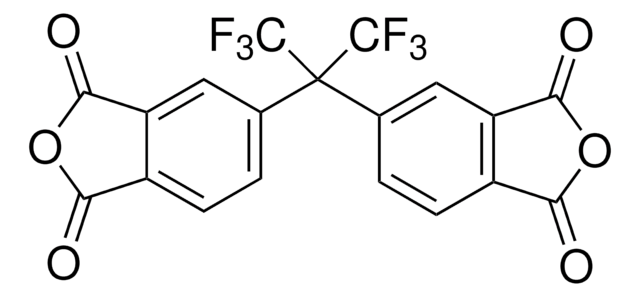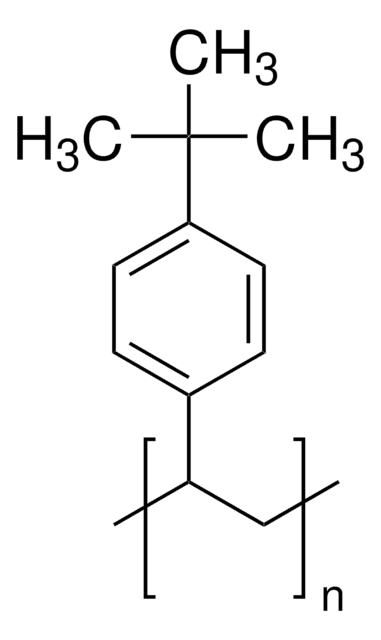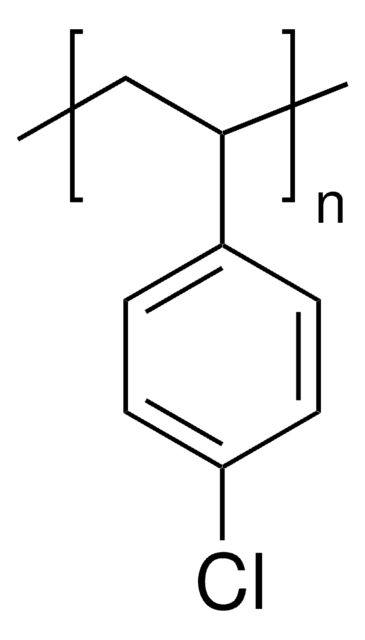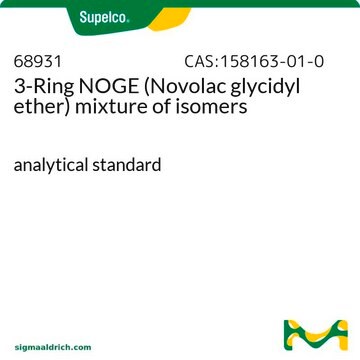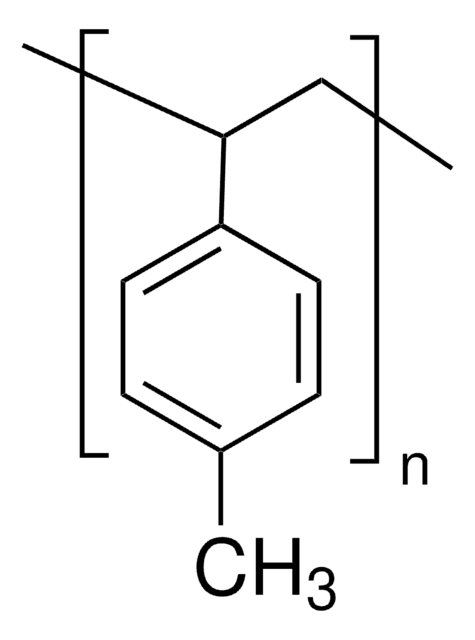436224
Poly(4-vinylphenol)
average Mw ~25,000
Synonym(e):
PVP, Poly-(4-hydroxystyrol)
About This Item
Empfohlene Produkte
Beschreibung
intrinsic viscosity parameters α=0.50, k=9.71 × 10-4 dL/g 25°C, in THF
Form
powder
Mol-Gew.
average Mw ~25,000
Grünere Alternativprodukt-Eigenschaften
Design for Energy Efficiency
Learn more about the Principles of Green Chemistry.
sustainability
Greener Alternative Product
Grenzviskosität
(α=0.50, k=9.71 × 10-4)
mp (Schmelzpunkt)
360 °C (dec.)
Übergangstemp.
Tg 130-185 °C
Löslichkeit
alcohols, ethers, ketones and esters: soluble
aromatics, petroleum ethers and chlorinated hydrocarbons: insoluble
Dichte
1.16 g/mL at 25 °C (lit.)
Grünere Alternativprodukt-Kategorie
, Enabling
SMILES String
Oc1ccc(C=C)cc1
InChI
1S/C8H10O/c1-2-7-3-5-8(9)6-4-7/h3-6,9H,2H2,1H3
InChIKey
HXDOZKJGKXYMEW-UHFFFAOYSA-N
Suchen Sie nach ähnlichen Produkten? Aufrufen Leitfaden zum Produktvergleich
Allgemeine Beschreibung
Anwendung
Lagerklassenschlüssel
11 - Combustible Solids
WGK
WGK 3
Flammpunkt (°F)
Not applicable
Flammpunkt (°C)
Not applicable
Persönliche Schutzausrüstung
Eyeshields, Gloves, type N95 (US)
Analysenzertifikate (COA)
Suchen Sie nach Analysenzertifikate (COA), indem Sie die Lot-/Chargennummer des Produkts eingeben. Lot- und Chargennummern sind auf dem Produktetikett hinter den Wörtern ‘Lot’ oder ‘Batch’ (Lot oder Charge) zu finden.
Besitzen Sie dieses Produkt bereits?
In der Dokumentenbibliothek finden Sie die Dokumentation zu den Produkten, die Sie kürzlich erworben haben.
Kunden haben sich ebenfalls angesehen
Artikel
Flexible electronic circuits, displays, and sensors based on organic active materials will enable future generations of electronics products that may eventually enter the mainstream electronics market.
Unser Team von Wissenschaftlern verfügt über Erfahrung in allen Forschungsbereichen einschließlich Life Science, Materialwissenschaften, chemischer Synthese, Chromatographie, Analytik und vielen mehr..
Setzen Sie sich mit dem technischen Dienst in Verbindung.









